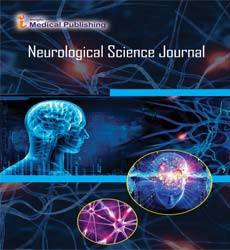Correlations among Apparent Diffusion Coefficient and Permeability Parameters from Dynamic Contrast-enhanced MR in Brain Tumor Parenchyma and Peritumoral Area
Abstract
Prospectively included 45 patients (M: 23, mean age: 46 y) who were examined by conventional, Diffusion Weighted Image (DWI) and Dynamic Contrast-Enhanced MRI (DCE-MRI). ADC and permeability parameters (volume transfer constant: Ktrans, extra-vascular extra-cellular volume fraction: Ve, reverse volume transfer constant: Kep and initial area under the time-concentration curve: iAUC) were calculated. 6-10 and 4-5 Regions of Interest (ROIs) were manually placed on Tumor Parenchyma (TP) and Peri Tumoral (PT) area, respectively. Results: Irrespective of brain tumor types, mean ADC, in TP and PT, were significantly inversely correlated with mean Ktrans, Ve, iAUC (P<0.00) and positively correlated with mean Kep (P<0.00). Further, specific to gliomas, similar correlations were found in TP and PT area (except mean Kep does not show any correlations with mean ADC in PT); to metastases, only mean Ve in TP area was associated with ADC (P=0.04).
Moreover, among the permeability parameters, of TP and PT, Ktrans, Ve and iAUC were mutually positively correlated with each other (P ≤ 0.03). Conclusion: Intricate correlations were found among permeability parameters and ADC, irrespective of the brain tumor types and ROI positions. Ktrans, Ve and iAUC may have a comparable diagnostic ability to classify brain tumors. complications were observed. Conclusions: TaMAP intraoperative monitoring is a safe, reliable, and sensitive MEP measure with ease-of-use that may serve as an alternative resource in neuromonitoring for spinal surgery.
Sensitivity was observed to be as high as 100% for 3/6 muscle groups tested and with robust efficacy of decompression across a variety of procedures and pathologies, including degenerative spine disease and spinal tumor. We describe a case of a 13 years old girl who developed L3-L4 spondylodiscitis by Staphylococcus aureus agent. After 2 months of levofloxacin therapy she developed intracranial hypertension, without any evidence of intracerebral mass or hydrocephalus at CT scan and MRI. The levofloxacin therapy was stopped and the symptoms disappeared after same days.
Open Access Journals
- Aquaculture & Veterinary Science
- Chemistry & Chemical Sciences
- Clinical Sciences
- Engineering
- General Science
- Genetics & Molecular Biology
- Health Care & Nursing
- Immunology & Microbiology
- Materials Science
- Mathematics & Physics
- Medical Sciences
- Neurology & Psychiatry
- Oncology & Cancer Science
- Pharmaceutical Sciences
